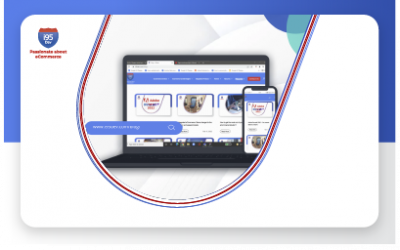eCommerce is an ever-evolving landscape with new technologies, platforms, business models, sudden changes in competition, changes in the value chain, and augmented customer behavior continuously keep organizations on their toes. Online sales have grown in the past few years, and it is expected to continue to claim a larger chunk of the total sales worldwide. Therefore, it is necessary to update your strategies and resources to match the pace of eCommerce market evolution. In this article, we will learn about the top six eCommerce trends that are about to make a huge impact in 2022 and beyond. Let’s begin:(Image Credits)
Top 6 eCommerce Trends 2022
eCommerce firms have many options to explore with the development of new technology and the advent of new markets. They can also try out new marketing methods and techniques. Let’s have a look at the upcoming eCommerce trends in 2022:
#1. Social Commerce Will Go Mainstream
Due to their multiple utilities, social media platforms have become an integral part of digital marketing strategies. Both eCommerce enterprises and social platforms are aware of this and work together to create mutually favorable circumstances from product delivery to customers. Social media platforms such as Instagram, Facebook, and TikTok have evolved into brand discovery engines. Social commerce and social media marketing work hand in hand, generating a wealth of information about your potential consumers and target audiences. Thus, you can expect social commerce to soon become as crucial as search engine marketing (SEM).
#2. A Wide Range of Payment Options
The simple things are what makes a customer happy. Providing multiple payment methods to cater to the needs of different customer groups is one of them. It’s the final stage in the buying process, and a lack of preferred payment options might lead to a blunder. The advent of fintech companies has stirred a huge surge in payment methods, be it online wallets or credit systems. This has made it necessary for online sellers to accommodate as many payment options as possible. In addition, it is expected that smartphones will account for more than half of all sales by 2025. Thus, look out for new payment methods and provide a gateway.
#3. Customer Experience that is Omnichannel and Hyper-Personalized
There has been an exceptional focus on increasing customer data fetching touchpoints in the past. Now the trend has shifted to increasing selling points, and omnichannel selling has become a reality. Combining these aspects would give your customers a seamless experience no matter where they would purchase due to hyper-personalization. Interestingly, people don’t find broadly targeted campaigns much valuable, but the campaigns tailored to their expectations go well. This can be useful for business models like direct-to-customer selling (D2C.)
#4. Google Local Inventory Ads (LIA)
Google LIA is a new concept that is gaining traction across Europe. It’s a feature that leverages the customer’s current location to promote nearby goods. Google LIA’s concept is straightforward. When a user searches for the desired product on Google, the local in-store available goods are highlighted.
As a result, the buyer may visit the business to inspect or check out the product before purchasing, avoiding unneeded hassles. According to Google, consumers who have the opportunity to view a product in person are more inclined to purchase it. Additionally, merchants can now provide a pick-up later option to increase their odds of making a sale.
#5. AR-First Commerce
Plain advertising, banners, and creatives struggle to capture prospects’ attention. To differentiate yourself from your rivals and increase conversions, you will need to get creative, and AR is one of the avenues that will help you market and sell your products. (Image Credits)
Augmented reality has become a defining factor since brands like IKEA have already harnessed it successfully, and it has started to drive customer expectations. Even Nike came up with a Snapchat filter, and thus, you can imagine its potential. It will help the users experience the product to a large extent before actually paying for it, thereby eliminating most decision-making hesitancy. Furthermore, this can be done without time constraints, making it even more practical for buyers.
#6. Live-Stream And Conversational Shopping
Perhaps, most of us are aware of charity events during live-streams, and we might have encountered sales during streaming too. However, it is no longer a fad limited to gamers as live-stream shopping is gaining traction globally when it comes to selling. A report finds that live-stream shopping generated $6 billion in sales last year. It is generally undertaken on social media platforms. It can be considered the visual version of conversational shopping, which can be done through audio chatbots on social media or on your voice assistant like Alexa. It is noteworthy that online searches through voice assistants are shooting up consistently, and including conversational shopping will help you capture that market share without much competition as of now.
Summing Up
Both products and buyers are evolving rapidly, which has consistently led to demand for new selling models. It’s critical to have the right approach to develop exceptional customer experience despite the rapidly changing landscape. Depending on your business size, you must try to incorporate resources to surf these trends. In case you need any further guidance on how to lay down your online store’s growth plan for 2022 and beyond, get in touch with Us now!
Recent Blogs
22 benefits ecommerce home decor furniture businesses
22 Benefits of eCommerce for Home Décor and Furniture Businesses Author Category Share Home décor and furniture businesses are increasingly turning to eCommerce to elevate their operations...
Home Improvement Industry: 11 Key eCommerce Features Consider
Elevating Home Improvement eCommerce: 11 Must-Have Features for a Seamless Shopping Experience Author Category Share In the dynamic landscape of home improvement, furniture, and lifestyle,...
Complete Guide to Automotive eCommerce Growth, Trends, Challenges, Solutions
A Comprehensive Guide to Accelerate Your Automotive Business Growth with eCommerce Author Category Share Introduction The automotive industry has undergone a significant transformation in...






